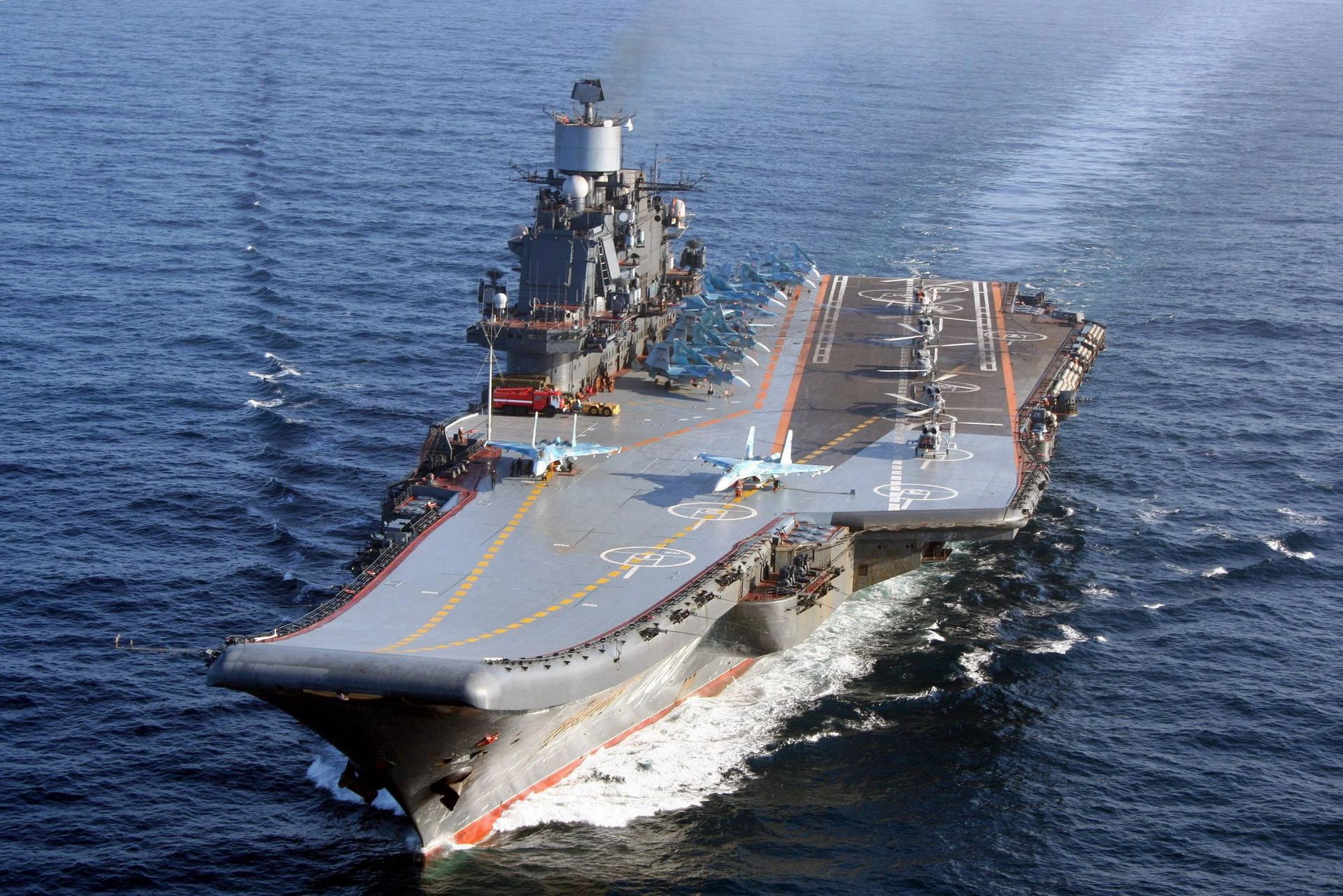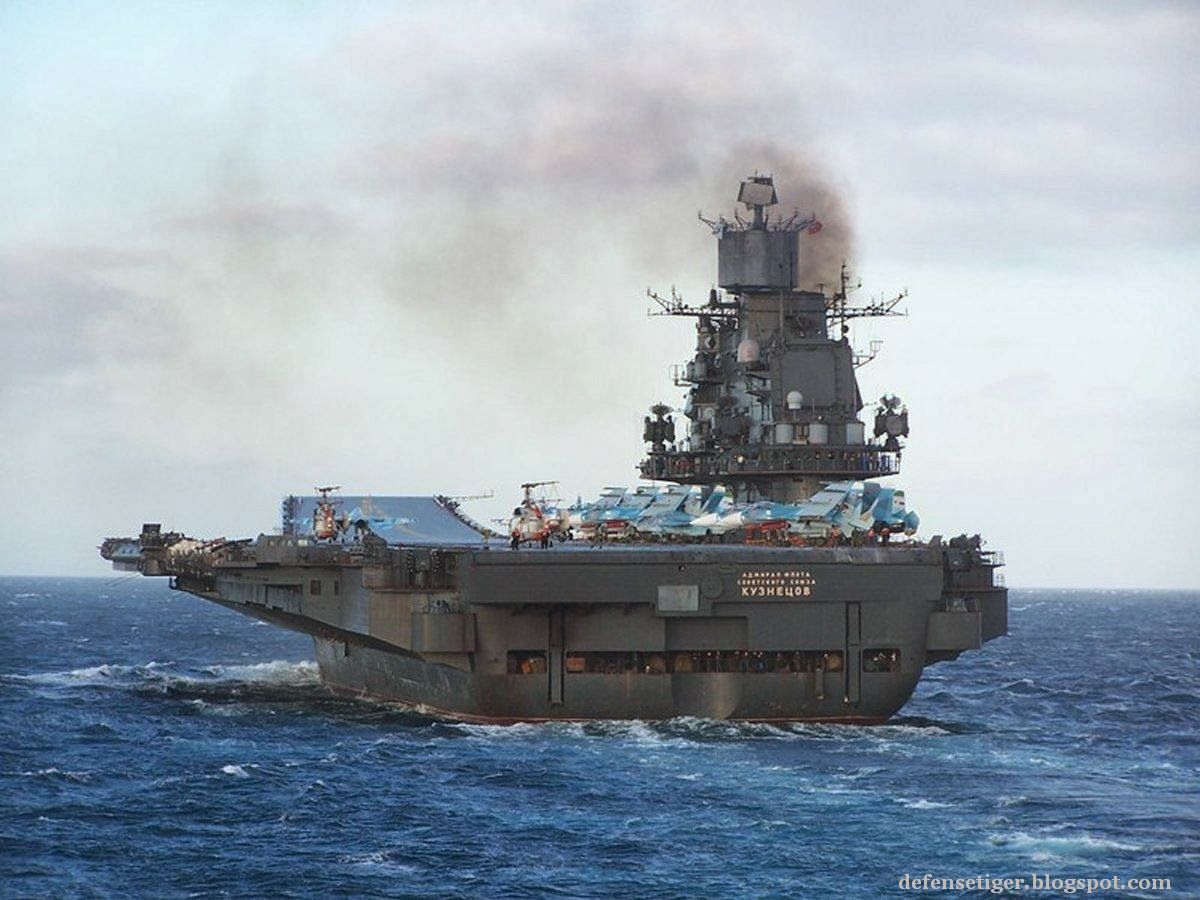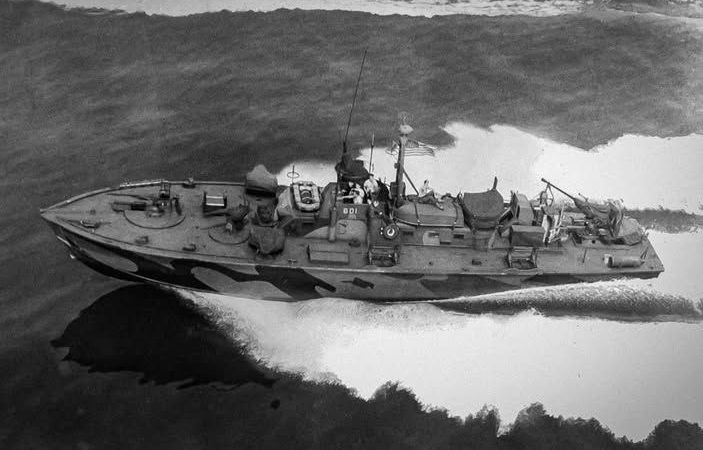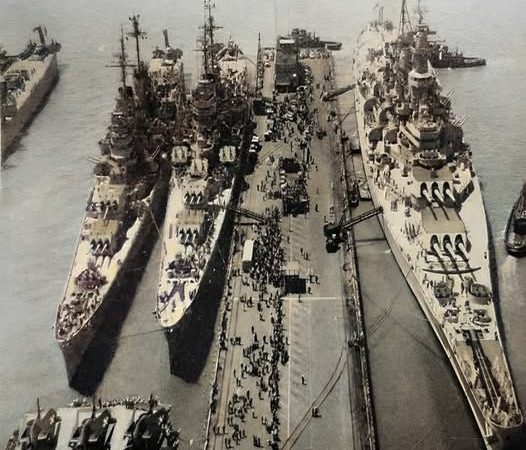Russia’s Admiral Kuznetsov Returns to Sea, Marked by Iconic Black Smoke Trail
The Russian aircraft carrier Admiral Kuznetsov has been spotted at sea once again, leaving behind its signature trail of thick black smoke. This characteristic plume is a result of the vessel’s aging boilers, which are powered by “mazut,” a heavy oil that was commonly used by Soviet-era ships. The recent images, captured by photographer Andrei Luzik and circulated by the state news agency Tass, showcase the carrier’s ongoing operational status while highlighting its persistent technical difficulties.

Despite being a crucial part of Russia’s naval fleet, the Admiral Kuznetsov has long struggled with mechanical issues. Its black smoke is more than just an environmental concern; it stands as a symbol of the vessel’s outdated infrastructure. The heavy oil-powered boilers, in particular, have faced numerous criticisms from military analysts. These boilers, which date back to the ship’s Soviet-era origins, are one of the reasons why the vessel has encountered so many maintenance challenges over the years.

Even with these setbacks, the Admiral Kuznetsov remains a key asset in projecting Russian maritime power. The carrier has undergone multiple overhauls, but its legacy of mechanical issues continues to follow it. Yet, its presence at sea signifies Russia’s determination to maintain its naval capabilities, even as the vessel navigates the difficulties of its aging equipment.

In an era of rapidly advancing military technology, the Admiral Kuznetsov’s black smoke serves as a visible reminder of the past—and a signal of the ongoing efforts required to keep this symbol of Russian naval power afloat.



